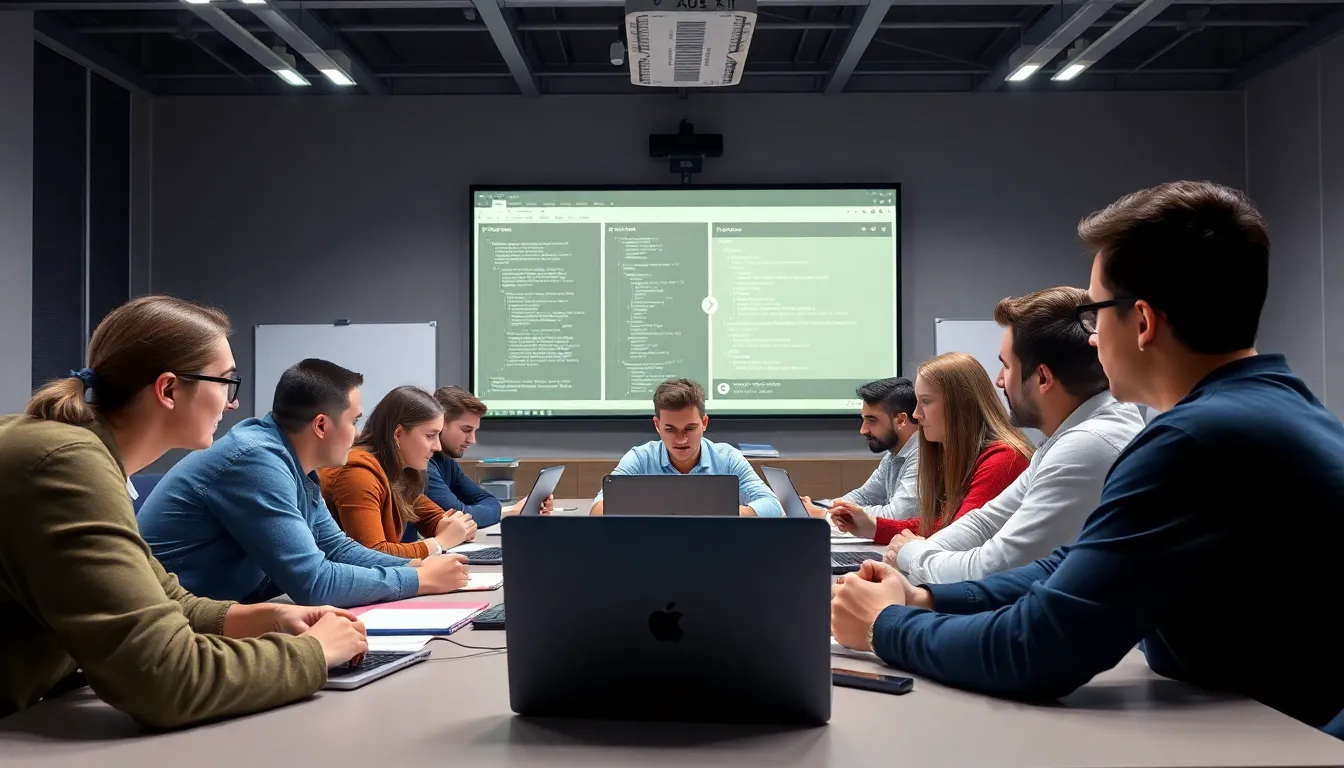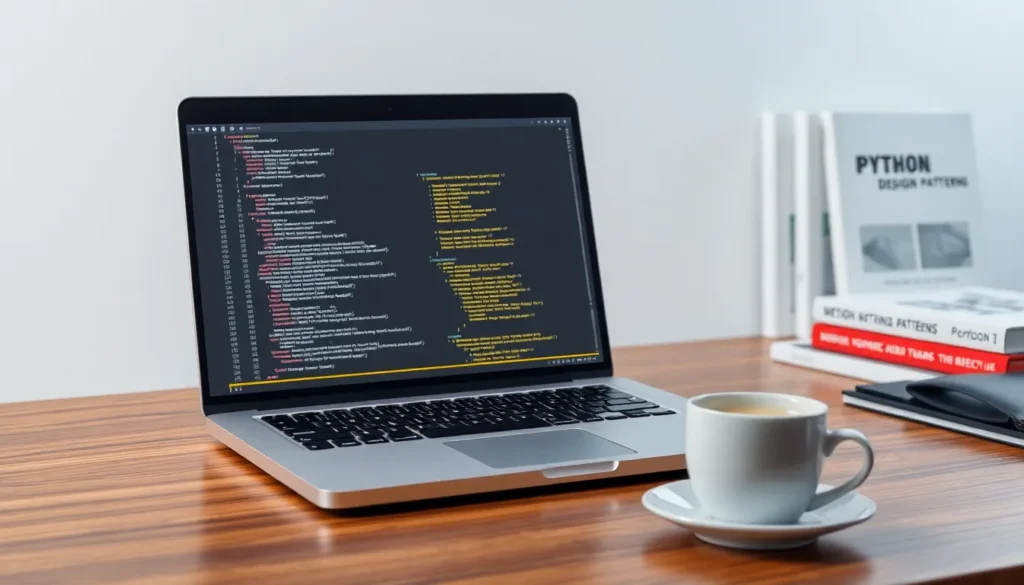In a world where coding can feel as complex as deciphering ancient hieroglyphics, Python emerges as the friendly giant, ready to guide aspiring programmers through the labyrinth of technology. With its clear syntax and versatile applications, it’s no wonder so many are jumping on the Python bandwagon. But where to start? Enter the realm of Python video tutorials—your ticket to mastering this powerful language without the headache.
Table of Contents
ToggleOverview of Python Video Tutorials
Python video tutorials provide an engaging way to learn programming concepts. Many resources are available that cater to different skill levels, from beginners to advanced users. They often include step-by-step instructions, making it easier for learners to follow along. Platforms like YouTube, Coursera, and Udemy offer a variety of tutorials, each focusing on specific aspects of Python.
Interactive elements enhance the learning experience. Tutorials frequently feature coding exercises and quizzes, encouraging active participation. These practical applications help solidify knowledge, allowing learners to apply concepts in real-world scenarios. Expert instructors often guide sessions, ensuring clarity and depth in each lesson.
A structured approach is common in many video tutorial series. This format often breaks complex topics into manageable segments. Videos typically range from 5 to 30 minutes, enabling learners to progress at their own pace. Learners can revisit sections when needed, reinforcing understanding and retention.
Visual aids complement verbal explanations in most tutorials. Infographics, coding examples, and screen shares illustrate key points effectively. Such elements help visual learners grasp difficult concepts easily. Feedback mechanisms, like comment sections, allow learners to ask questions, fostering community support.
Accessibility is a key benefit of video tutorials. Many are free or low-cost, offering high-quality content without financial barriers. This wide availability makes it easier for anyone interested in programming to start learning Python. Overall, Python video tutorials remain a valuable resource for those seeking to master this versatile language.
Benefits of Learning Python Through Videos

Learning Python through videos offers many advantages. These tutorials facilitate easy access to programming knowledge for everyone, regardless of their location or schedule.
Accessibility and Convenience
Access to Python video tutorials caters to a wide audience. Many platforms offer free or low-cost options, making learning affordable. Various websites, including YouTube, Coursera, and Udemy, provide a plethora of resources. Convenience comes from being able to learn anytime, anywhere; students can watch videos on mobile devices, laptops, or desktops. Self-paced learning accommodates different schedules and learning styles. Many tutorials allow users to pause and rewind videos, ensuring comprehension before moving on. Such flexibility makes Python more approachable for beginners.
Visual Learning Advantage
Visual aids significantly enhance the learning experience. Many video tutorials incorporate infographics and screen-sharing techniques, helping to clarify complex concepts. Engaging animations can turn abstract ideas into tangible examples. The combination of audio and visuals caters to various learning preferences, reinforcing understanding. Learners benefit from seeing code in action rather than just reading about it. Regular feedback from coding exercises and quizzes fosters knowledge retention, while community engagement strengthens support networks. Ultimately, visual learning strategies effectively empower students to grasp Python programming efficiently.
Popular Platforms for Python Video Tutorials
Several platforms offer diverse Python video tutorials, enhancing the learning experience for newcomers and experienced programmers alike.
YouTube Channels
YouTube features numerous channels dedicated to Python education. Channels such as Corey Schafer, Programming with Mosh, and Tech with Tim stand out for their comprehensive content. These channels often provide project-based tutorials, helping viewers apply their knowledge effectively. Engagement through comments allows learners to ask questions and connect with instructors. Various playlists organize topics systematically, leading to a structured learning journey. Viewers can access tutorials anytime, often at no cost, making YouTube a valuable resource for all skill levels.
Online Course Websites
Online course websites like Coursera and Udemy host extensive Python tutorials. Coursera collaborates with universities, offering structured courses that include quizzes and peer reviews. Udemy features a vast selection of Python courses, catering to different learning preferences and budgets. Each platform provides downloadable resources, enhancing the learning experience further. Users can benefit from lifetime access to course materials, promoting ongoing study. Ultimately, these platforms present a holistic approach to mastering Python through guided instruction and self-paced learning opportunities.
Key Features to Look for in Python Video Tutorials
When selecting Python video tutorials, certain features enhance the learning experience. Choosing videos with distinct characteristics can significantly impact the effectiveness of mastering the language.
Instructor Expertise
Instructor expertise plays a crucial role in the learning process. Instructors with strong backgrounds in Python development bring practical insights to tutorials. Experienced educators often present complex topics with clarity. Look for instructors who provide real-world examples to illustrate concepts. Verify their qualifications and prior teaching experience to ensure credibility. Engaging instructors foster a supportive environment, which enhances student motivation and learning retention.
Content Structure and Curriculum
Content structure and curriculum design directly influence how learners absorb material. Well-structured tutorials break concepts into manageable sections, making it easier to follow along. Each lesson should build on previous knowledge to maintain a logical flow. A comprehensive curriculum covers core topics like syntax, data structures, and libraries necessary for Python development. Look for tutorials that include hands-on projects and coding challenges to reinforce learning. Accessible materials such as downloadable resources enhance study sessions and encourage ongoing practice.
Tips for Getting the Most Out of Python Video Tutorials
Maximizing the benefits of Python video tutorials involves a few strategic approaches.
Setting Goals
Establish clear learning objectives before starting tutorials. Defining goals creates a focused learning path. Choosing specific topics like data structures or web development enhances engagement. With set milestones, tracking progress becomes easier, keeping motivation high. For instance, aiming to complete a tutorial series within a month provides a sense of accomplishment. Regularly reviewing goals helps maintain progress and adjust learning strategies when needed.
Practice and Hands-On Learning
Active participation significantly improves comprehension. Engaging with coding exercises within tutorials is essential. Completing projects reinforces concepts and builds practical skills. Many platforms offer coding challenges that complement video lessons. For example, utilizing platforms like LeetCode or HackerRank allows real-world application of learned theories. Frequent practice solidifies understanding and prepares learners for real-life coding scenarios. Experimenting with personal projects, like building simple applications, effectively consolidates knowledge. Prioritizing hands-on learning transforms passive viewing into active skill development.
Python video tutorials serve as a powerful tool for anyone looking to master programming. Their engaging format and structured content make learning accessible and enjoyable. With a wealth of resources available on platforms like YouTube, Coursera, and Udemy, learners can easily find tutorials that suit their needs and preferences.
By leveraging the advantages of visual aids and interactive exercises, these tutorials foster a deeper understanding of complex concepts. Setting clear goals and actively participating in hands-on projects can further enhance the learning experience. Embracing this approach not only builds coding skills but also prepares learners for real-world applications of Python.










